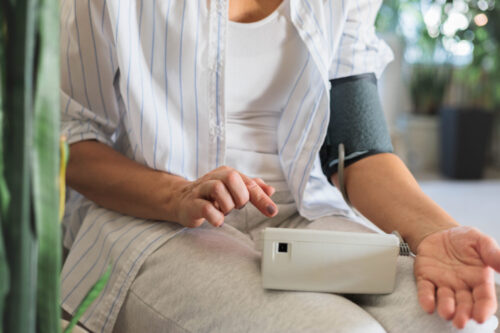
Talk with a ChartSpan Representative Today!
Our team is ready to help you improve patient care and outcomes.
Blog
How to Build A Model of Recurring Revenue for Your Hospital/Health System or Practice
Many healthcare practices and hospitals struggle to consistently generate enough revenue to cover their expenses. Across the U.S., 631 rural hospitals–more than 29%–are at immediate or high risk of closure because of financial hardship. The shift to value-based payments and the need for new technology has also left many primary and specialty care practices searching for new sources of revenue.
Medicare has created new value-based care programs, designed to improve patient outcomes, that generate recurring revenue for providers. Out of these programs, Chronic Care Management (CCM) has consistently been one of the most successful.
CCM can lead to recurring, monthly fee-for-service reimbursements from Medicare for providing patients with proactive, preventative care. Additionally, CCM programs can improve a practice’s performance on quality measures, increase beneficiary attribution, mitigate leakage of patients out-of-system, and encourage preventative care patient Evaluation & Management (E&M) encounters.
In addition to increasing revenue, Chronic Care Management helps provide patients with preventative care for their chronic conditions. While patients improve their health outcomes, practices can meet their revenue goals and continue serving the communities that need them.
The Challenges of Hospital/Health System Revenue
Many rural hospitals have trouble remaining profitable because providing services to patients costs more than private health insurance plans pay them. Practices in wealthy or densely populated areas rely on private insurance payments to make up for their losses on uninsured patients or patients with Medicaid and Medicare.
More than 200 rural hospitals are at immediate risk of closure because they have lost money for multiple years and don’t have enough cash reserves to offset their losses. On a national level, governmental payments could offset these losses. But it’s unclear when or if the federal government will offer those payments. In the meantime, rural hospitals need other options. CCM can support them by providing revenue to the health systems many hospitals are members of.
The Challenges of Generating Primary Care or Specialty Practice Revenue
Healthcare’s gradual shift to value-based payment programs and increasing use of technology have changed how smaller practices think about revenue. Rather than providing more services after patients are sick, providers need to focus on preventative, whole-patient care throughout the care journey. They also have costs they may not have had before, like increased clinical labor, data analytics software, and patient engagement technologies.
Many primary or specialty care practices searching for revenue don’t have the capacity to see more patients. Instead, they must maximize their reimbursements for the patients they already have and maintain those attributed patients.
Medicare offers multiple programs to address practices’ need for greater reimbursements and patients’ need for proactive care. These programs include the Medicare Shared Savings Program (MSSP), the Merit-based Incentive Payment System (MIPS), and Alternative Payment Models (APMs). Chronic Care Management helps physicians improve their performance in these value-based care programs, while also collecting fee-for-service revenue.
Recurring Revenue Streams from Chronic Care Management
Chronic Care Management gives hospitals and practices the opportunity to generate revenue from multiple sources, not just from monthly fee-for-service reimbursements. The graphic below shows the recurring revenue streams providers can benefit from when leveraging a well-run CCM program:

Chronic Care Management leads to recurring fee-for-service payments each month. But practices, health systems and hospitals engaged in value-based programs like MSSP, MIPS, and ACO or APM models can also receive increased reimbursements through the program. CCM can even generate revenue by encouraging patient engagement, preventing leakage, and increasing opportunities for E&M encounters.
Here’s a breakdown of how CCM helps practices generate revenue from six distinct sources.
1. Revenue Stream: Fee-for-Service
Under the familiar and foundational fee-for-service model, providers are reimbursed when they provide a service to a patient. Patients enrolled in non-complex Chronic Care Management receive 20 minutes of care each month, and practices can submit CPT code 99490 each time for reimbursement.
Chronic Care Management therefore leads to a consistent, recurring revenue stream. Though the FFS payment varies depending on practice location and whether the practice is an FQHC, RHC, or traditional ambulatory practice, the average CCM payment ranges from $700-$1,000 per patient, per year. With just 300 enrolled patients, practices can generate more than $200,000 in additional FFS payments each year, with net profit margins of 30-40%.
2. Revenue Stream: Medicare Shared Savings Program
Although Chronic Care Management produces fee-for-service revenue, it also helps generate value-based care revenue for practices in the Medicare Shared Savings Program.
Providers who’ve joined an MSSP ACO know that beneficiary attribution is critically important. Lowering the cost of care and improving patient outcomes leads to savings for the MSSP ACO. Providers and practices that have high numbers of patients attributed to them increase the opportunity to generate larger sums of savings.
Chronic Care Management ensures that a billable encounter takes place for a patient at least once a month, making it almost certain that the patient will be attributed to the CCM provider, based on the plurality of care formula used to reconcile beneficiary attribution.
Chronic Care Management can help with performance measures as well. Ongoing, preventative care, like that provided through CCM, reduces the cost of care for many patients. It is less expensive to check in on a person’s A1C levels or blood pressure readings every month than to provide inpatient care when the person’s condition reaches emergency levels.
CCM can also help patients improve outcomes. ChartSpan patients who enrolled in CCM had 12.1% fewer ED admissions and 13% fewer hospital readmissions than patients who were eligible for CCM but didn’t enroll. All of these improvements lead to practices receiving a greater share of savings from their MSSP ACO.
3. Revenue Stream: MIPS/Quality
The Merit-based Incentive Payment System, part of Medicare’s Quality Payments program, lets providers receive increased reimbursement and bonus pool payments for Quality, Cost, Promoting Interoperability (PI), and Improvement Activities designated by Medicare. MIPS rewards performance instead of focusing on savings.
As of this writing, a MIPS score of 75 places providers in the bonus pool, while a score of 85 is considered exceptional. The median ChartSpan CCM customer scores a 94, with nearly 40% of customers earning perfect 100 scores.

Chronic Care Management helps with MIPS and quality scores by identifying care gaps that providers can close. Care coordinators engage with patients each month. This provides 12 opportunities every year to identify missing vaccinations, cancer screenings, or eye exams. The care coordinator can then explain the importance of closing these care gaps to patients and help them make appointments with their providers.
Closing care gaps improves MIPS scores while also leading to more fee-for-service interactions–creating yet another source of vital revenue for rural hospitals/health systems and struggling practices.
4. Revenue Stream: Other ACO & APM Models
Some practices choose an ACO or Alternative Payment Model other than MSSP, and Chronic Care Management can help those practices too. Most ACOs and APMs, such as ACO Reach or Primary Care First, rely heavily on beneficiary attribution to determine payment bonuses, and CCM plays a valuable role in beneficiary attribution.
When a practice submits a CCM claim for a patient every month, CMS will see that they provide the plurality of the patient’s care and is highly likely to attribute the Medicare patient to them. This will lead to more per patient, per year payments from the ACO or APM.

5. Revenue Stream: Leakage Mitigation
Compared to fee-for-service or value-based care revenue, leakage mitigation is a revenue stream many practices don’t immediately think of. But CCM can reduce the number of patients who go outside the ACO for high-cost specialty care. This helps ACOs produce more in-network revenue to divide among practices and providers.
Speaking with a care coordinator about their health every month gives patients a strong sense of connection to their provider. When they need to see another type of provider, the care coordinator can reach out to their main provider for an in-network referral.
When the patient stays within the ACO, their care is often more efficient, since it’s easier to share health records and EHR information within an established network. The cost savings the ACO achieves can then be passed on to practices and providers.
6. Revenue Stream: Evaluation & Management Encounters
Chronic Care Management makes patients more likely to drive E&M encounters, since they’re reminded of the need for vaccinations, screenings, or annual visits 12 times a year. An analysis of CCM programs showed that they increased average E&M visits for a patient enrolled in a CCM program by 8%.
Care coordinators can make appointments for patients who have troubling symptoms or who are struggling to manage their chronic conditions. Medicare data shows that providers who offer CCM experience an increase of $216 in E&M encounters per patient. More importantly, CCM helps providers give patients proactive, preventative care before their chronic conditions worsen.
Diversifying Practice and Hospital Revenue with CCM
Rural hospitals and small practices often struggle to bring in revenue, which could prevent them from caring for the patients who rely on their services. Chronic Care Management gives these hospitals, health systems, and practices multiple opportunities to bring in new forms of revenue.
In addition to offering monthly, recurring fee-for-service revenue, CCM can also increase the likelihood of extra savings or bonus payments from MSSP, MIPS, ACO Reach, and other value-based care models. Providers who embrace CCM are also more likely to keep patients within their ACO and to increase their E&M encounters.
To learn more about how CCM can generate multiple streams of revenue for hospitals, health systems, and practices, check out ChartSpan’s guide to Chronic Care Management.
Subscribe for More Insights
Get valuable resources delivered straight to your inbox.
"*" indicates required fields






